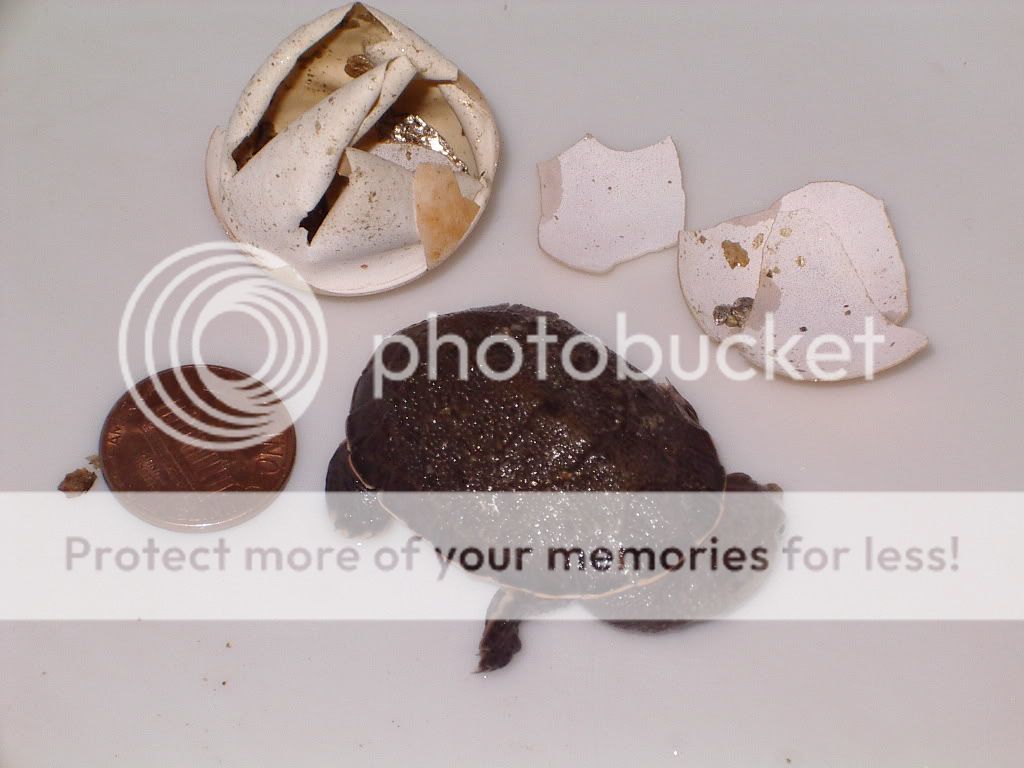-
Hello guest! Are you a Tegu enthusiast? If so, we invite you to join our community! Our site is specifically designed for you and it's a great place for Tegu enthusiasts to meet online. Once you join you'll be able to post messages, upload pictures of your Tegu and enclosure and have a great time with other Tegu fans. Sign up today! If you have any questions, problems, or other concerns email [email protected]!
You are using an out of date browser. It may not display this or other websites correctly.
You should upgrade or use an alternative browser.
You should upgrade or use an alternative browser.
Size
- Thread starter Skipperii
- Start date
- Messages
- 1,006
Are you sure it is a tegu?
bfb345
Member
- Messages
- 571
unless you ve been like starving it lol
psychocircus91
Member
- Messages
- 101
do you mean from head to vent? if hibernated, this may be possible, but head to tip of the tail? I don't think so. post a photo with something to reference it by.
psychocircus91
Member
- Messages
- 101
you've had him over a year? How long was he awake before brumation? He should be the same size coming out of brumation as when he went in. They don't grow because they don't eat.
Don't let these guys scare you, it's quite normal for a tegu to stay this small for a couple years. In most clutches, you'll get a couple individuals that grow very fast, and a few that don't. They'll stay small for a long time, and then ZIP, grow like mad in no time. As long as you're giving them good nutrition, there's nothing to worry about.
- Messages
- 2,798
How long did he stay down the first time and when did he wake up?
I've raised countless tegus, under the same conditions, in the same enclosures, and some grew up to "normal" size in 2 years, others hardly grew at all in that same time frame. It is indeed normal for some not to grow much. It isn't a frequent occurence, but it is normal. Just because this tegu is small does not mean there is anything wrong with it or the husbandry. Rapid growth is something to be more concerned with than slow growth.
psychocircus91
Member
- Messages
- 101
Roadkill said:I've raised countless tegus, under the same conditions, in the same enclosures, and some grew up to "normal" size in 2 years, others hardly grew at all in that same time frame. It is indeed normal for some not to grow much. It isn't a frequent occurence, but it is normal. Just because this tegu is small does not mean there is anything wrong with it or the husbandry. Rapid growth is something to be more concerned with than slow growth.
Yes, different growth rates are normal. Thirteen inches for a tegu that is nearly a year and a half old is very unusual..
Based on what concrete evidence? I've raised thousands of tegus, no exaggeration, over the years. In that time I've noticed that in most cohorts you get a few individuals that grow REALLY fast. So fast that you need to separate them from the rest of the group because there's a good chance (and yes, I've seen it) that they will turn on their siblings and eat them. Likewise, there's also usually a few individuals that, despite being kept under the exact same conditions, offered the exact same food, have the exact same husbandry, just voluntarily don't eat as much and stay alarmingly small for quite a while (usually about 2 years). Then one day their appetite picks up and they grow rapidly to meet the general size of the rest of their siblings. This is likely an evolutionary strategy to ensure success of a generation. If conditions are optimal that year, those bruisers with the rapid growth are likely to succeed very well and pass on their genetics to the next generation (making the most of when it is good). During times of poor conditions, with restricted access to resources and increased competition, those bruisers are going to fail, chances are the 'regulars' are going to fail or at least have a hard time, but the 'runts' who don't eat much, don't need much resources to grow, will do fine, get through the hard times, and then take advantage of later times when conditions are more favourable, thereby ensuring continuation of the species.
Being small is not a guaranteed sign of illness or bad husbandry, sometimes it is just a sign of being small. Or do you take it out on the parents of your neighborhood and chastise them for abusing their kids and malnutrition when they have short kids?
Being small is not a guaranteed sign of illness or bad husbandry, sometimes it is just a sign of being small. Or do you take it out on the parents of your neighborhood and chastise them for abusing their kids and malnutrition when they have short kids?
- Messages
- 766
You've raised thousands of tegus Roadkill? Under what program or institution did you do this? Where are they all now?
- Messages
- 2,673
- Location
- Central FL
Roadkill spent time in Brazil researching tegus. He has authored or co-authored published papers that I have read before (maybe they were textbook excerpts?). If he says thousands, I'd believe that to be a true statement.
That's ok, Laura, I'm getting used to it. When you challenge the preconceived ideas of others based on assumption, be prepared to be challenged directly and personally.
I feel it unnecessary to provide the name(s) of the places and peoples involved because they are scientists and research institutions and I know some of them don't appreciate being bothered by public. However, I will say that Laura is right, I went to Brasil to do research on tegu hibernation, while there I basically ran most of the tegu operations at the facility I was working at. We breed tegus (as well as numerous other species such as 3 species of caiman, anacondas, rattlesnakes, iguanas, red-footed tortoises, Burmese pythons, numerous turtles, several Bothrops species, etc.) for our own needs as well as to provide specimens for the scientific community so that wild populations were not as heavily impacted. Where they are all now, I can't say for sure - they went to scientists for research. I know some of the destinations were Canada, US, Brasil, Denmark, Brittain, South Africa and Australia, but I know I don't know them all. But here's a little something to get people to perhaps use their brains:

This photo is about HALF of the baias (tegu breeding pens) in ONE of our tegu "fields" (insets are photos of the artificial burrows we construct for their nesting and hibernation). I can count/calculate 22 pens in that photo alone. In each pen I kept on average one male with 2-3 females. With that combination, I was pretty much guaranteed to get a minimum of 100 hatched eggs per baia; often more, rarely less. Do the math: how many tegus could I have produced from the baias in that photo alone in one year alone? Still thinking I'm trying to exaggerate?

Part of our Boa constrictor breeding colony.

Half of one of our Bothrops rooms

part of our South American rattlesnake room

one of our Paraguayan caiman pens

Some baby Salvator merianae - if you look at the paper they're on, it is clear it is Brasilian newspaper.

The first Geoffroy's side-necked turtle (Phrynops geoffroyanus) I produced at this facility
I realize many take their debating lessons from American politics, but trying to silence the message by discrediting the messenger in this case isn't going to get far.
I feel it unnecessary to provide the name(s) of the places and peoples involved because they are scientists and research institutions and I know some of them don't appreciate being bothered by public. However, I will say that Laura is right, I went to Brasil to do research on tegu hibernation, while there I basically ran most of the tegu operations at the facility I was working at. We breed tegus (as well as numerous other species such as 3 species of caiman, anacondas, rattlesnakes, iguanas, red-footed tortoises, Burmese pythons, numerous turtles, several Bothrops species, etc.) for our own needs as well as to provide specimens for the scientific community so that wild populations were not as heavily impacted. Where they are all now, I can't say for sure - they went to scientists for research. I know some of the destinations were Canada, US, Brasil, Denmark, Brittain, South Africa and Australia, but I know I don't know them all. But here's a little something to get people to perhaps use their brains:

This photo is about HALF of the baias (tegu breeding pens) in ONE of our tegu "fields" (insets are photos of the artificial burrows we construct for their nesting and hibernation). I can count/calculate 22 pens in that photo alone. In each pen I kept on average one male with 2-3 females. With that combination, I was pretty much guaranteed to get a minimum of 100 hatched eggs per baia; often more, rarely less. Do the math: how many tegus could I have produced from the baias in that photo alone in one year alone? Still thinking I'm trying to exaggerate?

Part of our Boa constrictor breeding colony.

Half of one of our Bothrops rooms

part of our South American rattlesnake room

one of our Paraguayan caiman pens

Some baby Salvator merianae - if you look at the paper they're on, it is clear it is Brasilian newspaper.

The first Geoffroy's side-necked turtle (Phrynops geoffroyanus) I produced at this facility
I realize many take their debating lessons from American politics, but trying to silence the message by discrediting the messenger in this case isn't going to get far.
